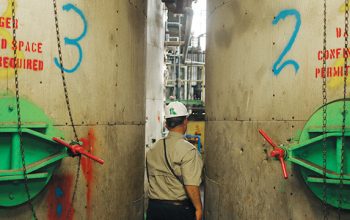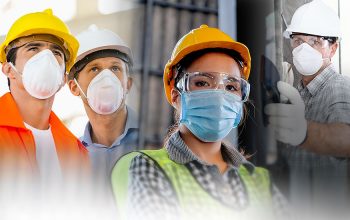A guide for workers and employers in the oil and gas industry, including those in sub-industries and the tasks that make up the oil and gas industry in general, released by the Occupational Safety and Health Administration (OSHA) of United States.
The guide notes the need to be aware of the changing conditions of the COVID-19 pandemic, including the spread of the virus and the availability of testing in your community, and implement infection prevention measures accordingly. Evaluate the hazards to which workers may be exposed; assess the risk of exposure; and select, implement, and ensure that workers use the hierarchy of controls to prevent exposure.
Conducting a hazard assessment (sometimes called a workplace hazard analysis) can help determine if work activities require close contact (within six feet or 1.8 meters) between workers and other people (for example, co-workers, supervisors or other people in the workplace). When a hazard assessment identifies activities with increased exposure risks, and those activities are not essential, consider delaying them until they can be performed safely.
Engineering controls
Current information on the asymptomatic spread of SARS-CoV-2 supports the need for social distancing and other protective measures within an oil and gas production or processing work environment. Changes in production practices may be necessary to maintain adequate distances between workers.
Set up common work environments (such as control rooms, jobsite trailers, and / or booths) so that workers are at least six feet (1.8 meters) apart, if possible.
Modify the alignment of workstations, including dashboards / dashboards, if possible, so that workers are at least six feet (1.8 meters) apart in all directions (for example, side-to-side and when they face each other). Ideally, modify the alignment of workstations so that workers are not facing each other and can maintain communications. Consider using markings and signs to remind workers to keep their location at their station away from others, and practice social distancing at breaks.
Use physical barriers, such as strip curtains, Plexiglas, or other waterproof dividers or partitions, to separate workers from each other, if possible, and when doing so do not create additional safety hazards (for example, reduced visibility in or around traffic vehicles). work or other equipment).
Facilities should consider consulting with a heating, ventilation, and air conditioning engineer to ensure adequate ventilation in work areas to help minimize potential worker exposures. Opening windows, when possible, is a simple measure that can help disperse and dilute any viruses that may be present in the air.
If fans, such as pedestal fans or rigid-mount fans, are used in the installation, take steps to minimize the air from the fans that blow from one worker directly to another worker. Personal cooling fans should be removed from the workplace to reduce the potential spread of airborne or aerosolized SARS-CoV-2. If fans are recalled, employers need to be aware of and take steps to avoid heat hazards.




